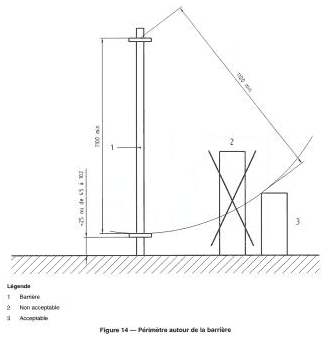 |
|||||||||
|
|
|
|
|
|
|
 |
|||||||||
|
|
|
|
|
|
|
1. The law of January 3rd, 2003 relative to the swimming
pool safety has for objective to prevent young children's drowning.
This law imposes :
- Since January 1st, 2004, all private (individual or collective
use) swimming pools must be equipped with a safety device.
- Since May 1st, 2004, any seasonal renting home equipped with
a swimming pool must also be equipped with a safety device.
- From January 1st, 2006, any swimming pool must be equipped wit
a safety device.
- The penalty for non-compliance with this law is a fine of €-45
000,00.
2. The application decree of this law have been published
on January 1st, 2004 (decree n°2003.1389 of December 31st,
2003 relative to the swimming pool safety and modifying the construction
and dwelling code).
This decree has been modified on June 7th, 2004 with the decree n°2004-499 which fix safety requirements for 4 kinds of devices : fencing systems, covers, alarms and shelters.
Are presumed compliant to its requirements, the products which respect the following standards :
NF P90 306 (May 2004) : pool fencing
systems and means of access. Security requirements and test methods
(norm's revision of December 2003).
NF P90 307 (May 2004) : alarm systems.
NF P90 308 (May 2004) : safety covers and grappling devices.
NF P90 309 (May 2004) : shelters.
The article R.128-4 is completed with the following paragraph
:
Devices installed before the decree 2004-499 (June 7th, 2004) publication are in accordance with those requirements as long as the swimming pool owner received from its manufacturer, seller, safety devices installer or technical controller a document attesting that the safety device is compliant with the security requirements. The owner can also attest himself this conformity with a document accompanied by the useful justifying techniques, under its own responsibility.
For further information about standards
: norminfo@afnor.fr
3. The NF P90 306 standard of May
2004.
Domain of application
The standard defines the minimal security requirements and test
methods as well as informations for consumers concerning pool
fencing systems and their means of access.
This document concerns pool fencing systems and their means of
access, designed to restrict the access of a children aged 5 and
under to a buried swimming pool for a private use (individual*
and collective*).
Those devices can also be use with out-ground pool.
The test requirements described in the document correspond to
the products security maintenance for a minimum of 3 years.
* : individual private use : private swimming pool reserved to
a family's private use.
* : collective private use : any pool which is not for an individual
use is considered as designed for a collective use, except nautical
centers.
Are not concerned by this standard :
- swimming pool located inside a building.
- swimming pool put on the ground, inflatable or removable.
- nautical centers which are supervised by a lifeguard.
Relative requirements to the implementation of a fence and a mean of access.
This fence does not replace common sense or individual responsibility. It is not designed to replace the vigilance of the parents and / or responsible adults who remain the essential factor in protecting young children.
- for a collective use, the mean
of access must close and latch automatically.
- this device can also be use with an out-ground pool.
- when the fencing system is combined with one or several walls,
ensure those walls should not permit, because of their height
or own opening systems (doors and windows closed with a childproof
device), an access to the pool.
- a hedge is not considered as a suitable barrier.
- the minimum height between any two points that could be used
to climb the fence must be over 1.10 meter.
- it is recommended to placed the fence at 1 meter (minimum) from
the pool, but at the same time not too far away from the pool
in order to avoid efficiency loss.
No fixed or mobile support of any kind can be within 1.10 meter of the barrier or gate.

Tests.
- height measure
- jamming
- presence of small size removable elements
- twisting and traction tests
- unlocking systems endurence (50,000 cycles of opening / closing)
- dynamic test : big soft body shock (50 kg / 150 J)
- extortion test
The attestation of conformity to
the NF P90-306 standard is delivered by a laboratory, after a
successfully realization of all of those tests.
See also : http://www.afnor.fr/portail.asp